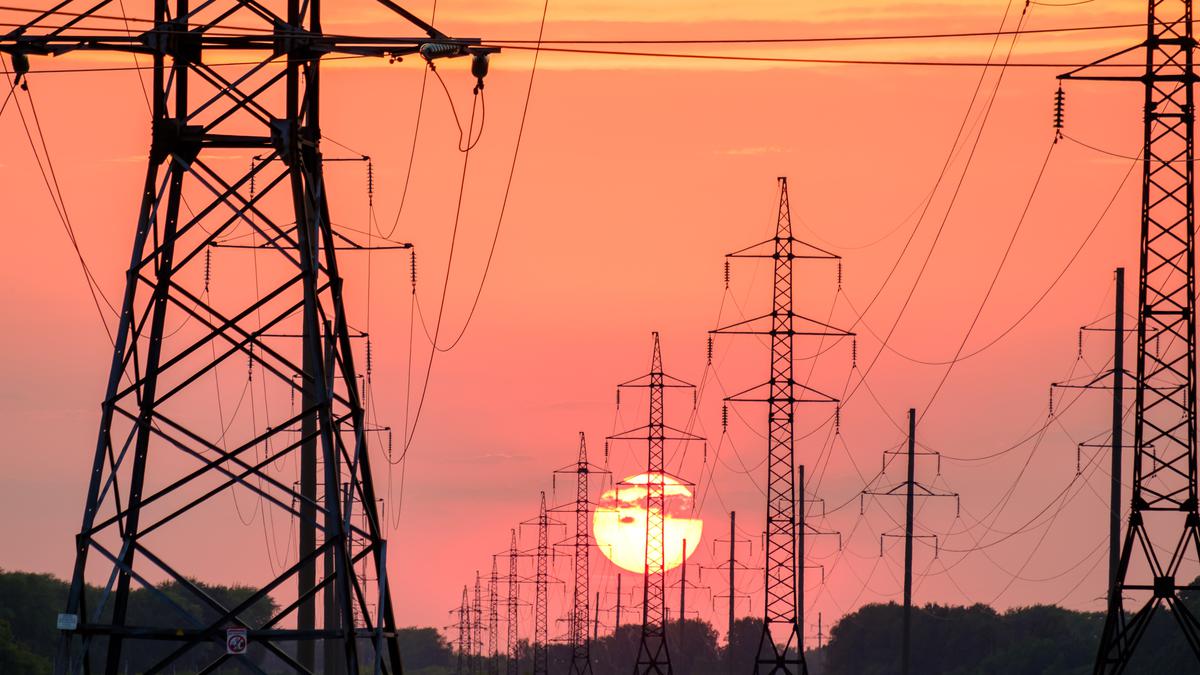
How is electricity transmitted? | Explained Premium
The Hindu
India’s power transmission system is complex, with many elements and considerations. It is the backbone of the nation’s economic development. This article explains electric power transmission, its components, and the factors influencing it. Transmission involves generation, transmission, and distribution of electricity, with transformers increasing voltage and reducing current. Cables, switches, substations, and other elements are used to transmit electricity efficiently. Three-phase AC is the most common way to transfer electric power, and wide-area synchronous grids are the most powerful.
When India’s first Prime Minister Jawaharlal Nehru visited the planned site of the Bhakra Nangal Dam in Bilaspur in 1954, he called dams “the temples of modern India”. Contained in his turn of phrase were many indications about the way India was to develop in the coming decades – but it also spoke to the centrality of electricity in the modern nation and the foundations that power transmission laid for economic development.
This article presents a simplified introduction to electric power transmission.
Since energy exists in many forms, like light, sound, heat, etc., power and power transmission also exist in many forms. For example, mechanical power in a car is transmitted using gears. Electric power transmission is more complicated because of the multiple phases of electric current, and factors like voltage, impedance, frequency, etc.
Any power supply system has three broad components: generation, transmission, and distribution. Electricity is generated at power plants as well as smaller renewable-energy installations. Then it is transmitted using a distributed network of stations, substations, switches, overhead and underground cables, and transformers, among other elements.
Finally, it is distributed to consumers in a standardised way, befitting the needs of various machines and applications.
First, in any conductor that transports electric current, the transmission efficiency is higher at lower current and higher voltage. This is because the energy loss during transmission increases as the square of the current, whereas the amount of voltage increase corresponds on a 1:1 basis with the amount of current decreased. That is, if voltage is increased by 5 units, the amount of current will drop by 5 units, but the amount of energy lost will be reduced by 25 units.
This is the purpose of transformers: they increase the voltage and reduce the current before feeding into transmission lines, and the reverse when receiving current to be supplied to consumers. Transmission cables can be seen transporting current at 115 kV, 230 kV, etc. for this reason. However, more than 2,000 kV or so is infeasible because then air itself becomes conducting, causing the cable to ‘leak’ current.

Thomas Jefferson and Abraham Lincoln are two of the greatest presidents that the U.S. has seen. You probably know that already. But did you know that Jefferson made what is considered the first contribution to American vertebrate paleontology? Or that Lincoln is the only U.S. president to receive a patent? What’s more, both their contributions have March 10 in common… 52 years apart. A.S.Ganesh hands you the details…












